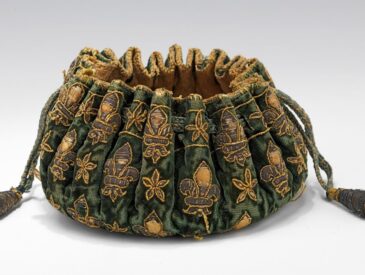The leather blazer, once a simple staple of Western fashion, has slowly but surely infiltrated wardrobes worldwide. It’s no longer just a symbol of office power suits or rockstar rebellion. Across different cultures, the leather blazer has taken on new meanings, evolving into something fresh and exciting. It now represents the fusion of modernity with tradition, sophistication with streetwear. From the bustling streets of Seoul to the intricate drapes of Indian sarees, the leather blazer is everywhere—but it looks different depending on where you are.
Let’s take a journey across the globe and see how this iconic piece has been reinterpreted in various cultures, highlighting the contrasts and connections in how it’s worn and styled.
1. Western Fashion: From Power Suits to Streetwear Staples
In Western fashion, the leather blazer carries with it an aura of authority. It’s often associated with structured office wear—think of the corporate power suit of the 80s. Yet, as the years have passed, its role has expanded. No longer confined to the workplace, the leather blazer has slipped into the realm of everyday fashion.
In cities like New York and Paris, the leather blazer is an emblem of effortless chic. A classic black blazer paired with a crisp white T-shirt and sleek trousers might be the look for a Parisian woman, her outfit as understated as it is stylish. But in New York, the leather blazer women often comes oversized, a statement piece layered over casual, street-inspired clothing like sneakers or oversized jeans. It’s this ability to transition from formal to casual that has cemented the leather blazer as a global icon of versatile style.
Yet, no matter how it’s styled, it’s always been about confidence. The leather blazer’s clean, sharp lines provide structure, while the leather itself—the texture, the sheen—commands attention. Whether it’s worn for power meetings or urban exploration, it always speaks to a sense of assured style.
2. India: Traditional Meets Modern
In India, where rich cultural traditions dominate, the leather blazer is a surprising but increasingly popular fusion piece. It’s rare to see leather blazers paired with traditional Indian attire, yet this pairing is gaining ground, especially in cities like Mumbai and Delhi. Here, women have started integrating the blazer into the classic saree, creating an edgy look that combines the old and the new in one seamless outfit.
The sharp lines of the blazer contrast dramatically with the fluidity of the saree, creating a visual tension between structure and softness. It’s bold, it’s different, and it’s a reflection of the evolving nature of Indian fashion. Designers are catching on, too, incorporating traditional Indian motifs into leather blazers—embroidered fabrics, rich colors, and hand-stitched details, all blending the world of fashion with heritage.
The fusion doesn’t stop there. Leather blazers are also paired with lehengas, kurtas, and even casual western wear in a fresh take on Indian style. The melding of cultures creates something new, a perfect example of how fashion constantly reinvents itself.
3. South Korea: Street Chic with a Twist
South Korea is the beating heart of fashion innovation, particularly when it comes to street style. In Seoul, the leather blazer is no longer just for boardrooms. Here, it’s part of a carefully curated, sometimes rebellious, urban aesthetic. It’s layered over oversized sweaters or hoodies, paired with baggy pants, and topped off with chunky sneakers. The fit is often loose, the lines not as sharp, as the look leans more toward relaxed and effortlessly cool.
What’s interesting in Seoul is how fashion constantly shifts, and the leather blazer has adapted accordingly. While the classic black blazer still reigns, the material itself is evolving. Think leather blazers in pastel shades or metallic finishes, a far cry from the traditional dark hues associated with the piece in the West.
In many ways, the leather blazer in South Korea represents freedom and individuality. The country’s youth culture, heavily influenced by K-pop stars and influencers, has embraced this piece as part of their self-expression. It’s no longer just a jacket—it’s a canvas, a statement, a way of telling the world exactly who you are.
4. The Middle East: Modesty and Luxury Combined
In the Middle East, fashion is often a delicate balance of tradition and modernity. Women in cities like Dubai and Riyadh have embraced the leather blazer in ways that reflect both luxury and modesty. Rather than opting for a tight-fitting, figure-hugging silhouette, the leather blazer in the Middle East is often worn with long dresses or loose trousers, creating an elegant yet modest ensemble.
The key here is balance. The structured blazer adds a sense of sophistication, while the flowing, more covered attire underneath ensures the wearer remains within the cultural norms of modesty. Yet, the materials used—leather, often high-quality and finely crafted—bring a luxurious edge that is unmistakable.
The designs are more refined, and lightweight leather is preferred to ensure comfort in hot climates. The Middle Eastern interpretation of the leather blazer is one that speaks to a sense of understated elegance, blending the best of contemporary fashion with cultural respect.
5. South America: Bold, Vibrant, and Unafraid
In South America, where color and energy rule, the leather blazer has been reimagined as a statement piece. In Brazil and Argentina, the leather blazer is often seen in bold hues—red, cobalt blue, emerald green—adding a pop of color to any outfit. The sleek, polished nature of leather contrasts sharply with the laid-back, colorful spirit of South American fashion.
Women here wear leather blazers over casual wear, combining them with skirts, shorts, or even flowing dresses, depending on the occasion. The contrast of formal and casual is key to the South American interpretation of the leather blazer, where the piece is both refined and playful. It’s a versatile garment that transcends seasons, blending the best of bold fashion with practicality.
As with many global trends, South America has taken the leather blazer and made it its own. Here, the piece becomes something more: an embodiment of confidence, a reflection of the continent’s free-spirited energy.
Conclusion
The leather blazer is far from one-dimensional. It has traveled the world, reinventing itself time and time again to reflect the local culture, climate, and lifestyle. In Western cities, it speaks of power and versatility; in India, it blends traditional attire with modern style; in South Korea, it embodies street chic and individuality; in the Middle East, it balances modesty with luxury; and in South America, it radiates boldness and confidence.
No matter where it is worn, the leather blazer transcends its origins, proving that good fashion knows no boundaries. It’s a garment that adapts, evolves, and brings a piece of the world into every wardrobe. So, whether you’re in Paris or Rio de Janeiro, Seoul or New Delhi, the leather blazer is more than just a jacket—it’s a global symbol of style, culture, and individual expression.





